In today’s world, the word PTSD is being thrown around very casually. However, do we really understand what PTSD means? In this blog post, I will discuss every aspect of PTSD you need to know. Keep on reading all the way to the end to gain wholesome knowledge about PTSD and what can you do if you are suffering from the same.
Table of Contents
What is post-traumatic stress disorder (PTSD)?
PTSD or post-traumatic stress disorder is a mental health disorder. PTSD normally gets triggered after one has been in a terrifying incident. The victim either suffers through the incident or witnesses it to the point that it causes severe trauma. The most common symptoms of PTSD include nightmares, flashbacks, severe anxiety, and finally, last but not the least, out-of-control thoughts about the event and scenario.
We are all living very stressful lives. It is practically impossible to have a life where you do not have trauma, loss of a loved one, fall sick, deal with stress, etcetera. However, in most cases, minor traumas do not lead to PTSD. PTSD occurs when the trauma is so severe that the brain finds it difficult to process it. Your brain may either block the entire incident or keep on repeating it over and over in your head.
People who suffer from PTSD find it hard to adjust to their normal life and cope with the pressure of day-to-day activities. One more thing that I need to make clear here before I progress with this blog post is that PTSD does not necessarily start the moment a person experiences trauma. It may take a while to buffer and come to the surface. Therefore, a person may start observing the symptoms of PTSD a few months down the line.
Healing is possible
This does not mean that a person who is suffering from PTSD cannot heal mentally and emotionally. In some cases, PTSD can also be temporary. It may go off in a few months. Over time, with good self-care practices and with the guidance of a mental health professional, most people start to do better. However, if you’re realizing that your PTSD is affecting your day-to-day work life, interpersonal relationships, social life, etcetera, you need the help of mental health professional to guide you and help you get rid of your PTSD.
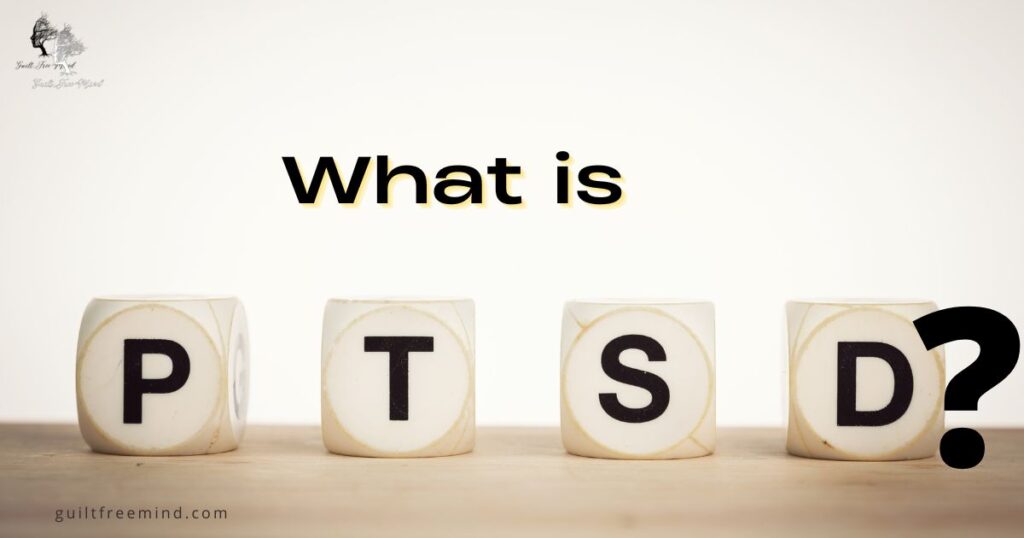
The psychology behind PTSD
As I mentioned before, not everyone who has experienced a traumatic event in their life will experience PTSD as well. Most people go through traumas but do not develop PTSD. It is also not necessary to have faced a previous trauma to develop PTSD. Even the loss of a close friend or a family member can lead to PTSD. Alternatively, grief or an extremely painful break-up can also act as a contributor to PTSD.
In most cases, the symptoms of PTSD start to manifest themselves within three months of the occurrence of the dramatic incidents. In some cases, the symptoms may even manifest years after the original incidents.
How do identify if a person is suffering from PTSD?
Since PTSD can occur within three months or years after the traumatic incident , it may become hard to figure out if a person actually has PTSD or not. One easy way to identify PTSD is if the trauma or the memory of it is affecting one’s day-to-day functioning, interpersonal relationships, and ability to lead a happy and fulfilling life. If the disturbing symptoms last for more than a month, it can be considered to be PTSD. It can either go away within a few months or it can last for a much longer duration. In some people, PTSD can become chronic and keep affecting them for the rest of their lives.
What effect does PTSD have on a person?
You must have heard of the term ‘shell shock’. This term came into being around the time of World War Two. The word ‘shell shock’ was used to indicate combat fatigue that the soldiers endured after returning from the war. PTSD still occurs in war veterans. However, it is not restricted to only war veterans. PTSD can affect kids and adults of all age groups, and people of any nationality, culture or ethnicity.
The stats on PTSD
According to the latest surveys, PTSD has an effect on around 3.5% of US adult population every year. One of every 11 people, one gets diagnosed with PTSD during their lifetime. Amongst the two genders, women have been observed to be twice as likely to have PTSD as men.
Why does PTSD make life so hard?
People who suffer from PTSD go through disturbing and intense feelings and thoughts that are related to the traumatic experience long after the traumatic experience has passed. Such people live in a loop where the traumatic event continues to occur repeatedly. Therefore, it becomes difficult for them to get out of their own heads. They are constantly surrounded by nightmares, flashbacks or reliving the event repeatedly.
Being in a constant state of agitation, such people develop anger, fear, frustration and sadness. They start to feel detached and estranged from everyone around them. They feel that no one understands what they are personally going through. Such people may also avoid other people, situations or places that may remind them of the traumatic event. Even a loud noise can instigate or act as a trigger in case of PTSD. Thus such people can may display strong negative reactions to certain words, any sudden movement and loud or specific noises.
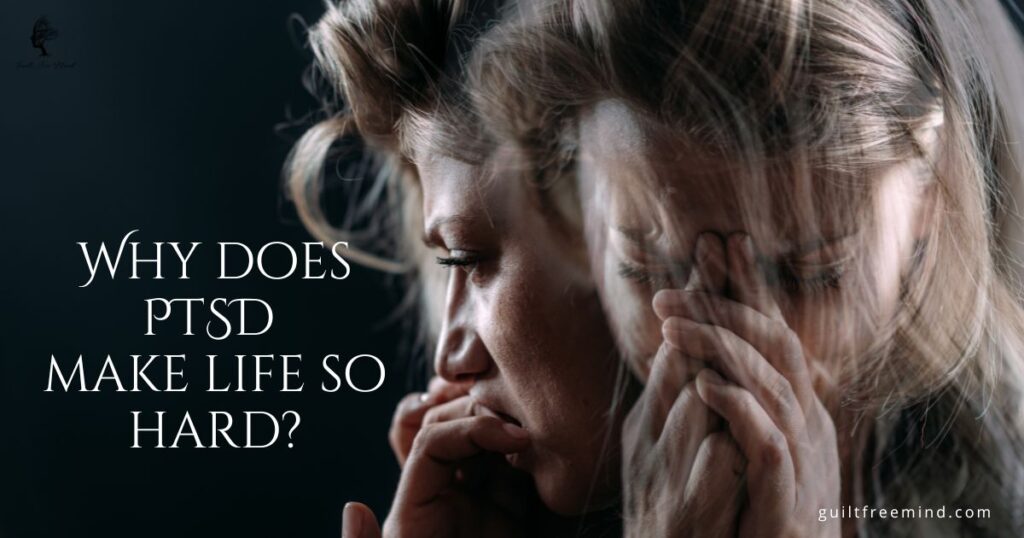
As I mentioned before, it is not necessary for a person to have experienced the trauma directly to be suffering from PTSD. The trauma can also be indirect and yet cause PTSD. For example, learning that someone in your family had a violent death can cause PTSD. The brain may manifest images of the accident or violence. This in turn causes PTSD. Another example of an indirect PTSD could be the exposure of a police officer to the gruesome details of child abuse.
Signs and symptoms of PTSD
The signs and symptoms of PTSD have been grouped into 4 categories:
- Avoidance
- Intrusive memories
- Changes in the emotional and physical reactions
- Negative changes in mood and thought processes
Symptoms of intrusive memories
The most common symptoms that indicate that a person is having intrusive memories are
- Repeated occurrence of the unwanted and distressing memories related to the traumatic event
- Reliving the event repeatedly in one’s head. The person feels as if they have been transported back in time [flashback].
- Night terrors, nightmares or upsetting dreams pertaining to the event
- Severe physical or emotional distress caused by anything that may remind the person of the traumatic event
- Avoidance of people and places that may remind the person of the traumatic event
Symptoms of avoidance
- Avoid thinking, talking or even revealing the traumatic event.
- Avoiding people, places or activities that may remind the person of the traumatic event
- Negative changes in the thought processes
- Negative changes in mood
Signs of negative changes in mood and thought processes
- Negative views about self and other people
- Negative views about the world
- Feelings of hopelessness pertaining to future
- Memory issues, not remembering aspects of the traumatic event or not remembering the traumatic event at all
- Difficulty maintaining close relationships
- Feeling a sense of detachment from friends and family
- Lack of interest in activities and hobbies the person once enjoyed
- Extreme difficulty in experiencing any kind of positive emotion
- Feeling numb emotionally
- Changes in emotional and physical reaction
Signs of changes in physical and emotional reaction
- Getting easily frightened by loud noises or sudden activities
- Always being on guard for any kind of danger in your life
- Indulging in self-destructive behavior like driving too fast, drinking too much etcetera
- Finding it difficult to focus on work
- Concentration is hard
- Constantly feeling irritable, angry, or aggressive
- Overcome by feelings of shame or guilt.
PTSD in kids: signs and symptoms
Kids show signs of PTSD in a different manner than adults. This does not mean that kids do not suffer from PTSD. In the case of kids, they may reenact their difficult life situations or traumatic events by means of play. They may also experience frightening dreams or night terrors that may include an aspect of the traumatic event or indirect manifestations and visualization of the event.
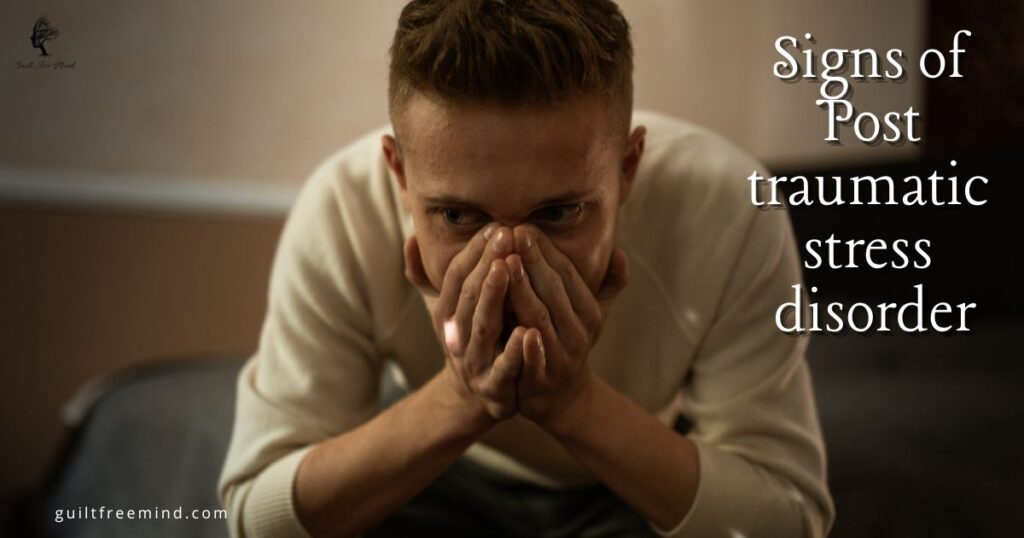
Effect on emotions, brain and body
A common misconception regarding PTSD is that it only affects the mind. This cannot be further from the truth. PTSD is a problem that affects the mind, the body, and a person’s emotions. The way the person processes thoughts, comprehends behavior, and understands others can also change owing to PTSD. Those who suffer from emotional trauma or have emotional PTSD may have scars that may last for months to years on end. In some cases the scars can also last for a lifetime.
People who suffer from emotional PTSD have heightened fear and may feel threatened in various events and situations. They are afraid of interacting with others, talking to people, or even hearing voices that are similar to those who hurt them in the past.
Effect on the brain
As per studies, PTSD has shown to have a huge impact on the brain. The sections of the brain that suffer most due to PTSD are the hippocampus, amygdala and prefrontal cortex. These three sections have a huge role in regulating a person’s emotions and responding to fear.
Once a person has started experiencing PTSD, these areas start functioning in a different manner than before. Therefore, PTSD has a biological basis along with mental.
Impact on the brain of the sufferer
When a person suffers from a trauma, there are lasting changes to certain sections of the brain. These sections are normally responsible for the production of norepinephrine and cortisol. Once PTSD affects the brain, the production of both norepinephrine and cortisol increases in response to stress.
The problem with PTSD is that the person is constantly afraid of going through anything that may remind them of the trauma. This constant fear causes the constant production of cortisol and norepinephrine from the brain. The acute and chronic changes that occur in the neurochemical systems and certain brain regions due to stress can cause a huge change in the brain circuit. The sufferer’s hippocampus, amygdala and medial prefrontal cortex react to the overactive stress response of the body.
This in turn induces a snowball effect. Once this response has been fired, it can become impossible to shut it down. The triggers are already too much for the person to deal with. They can also spread to other actions overtime if the person has an overactive stress response. This further causes more stress to the person.
Complications
Other psychological disturbances that a person with post-traumatic stress disorder can experience are:
- Anxiety
- Depression
- Insomnia
- Memory issues
- Disorderly behavior
- Substance use disorders
Unfortunately, most people think that PTSD is a problem of the mind. However, PTSD also causes physical toll on the victims. The general physical symptoms of PTSD most often include lower back pain, stomach pain, headaches, chronic pain, vomiting, and muscle cramps.
When a person is in a traumatic situation, the body starts to cause deep muscle contractions. This is done so that we can defend ourselves, have quick reflexes, and run away if needed. This is the fight or flight response. However, when a person suffers from PTSD, they are always in the fight or flight stage. They are constantly afraid that the trauma that they have endured previously will come back to the surface and haunt them again. Therefore, they are always in a fight or flight response state. This causes severe and constant muscle cramping, twitching, shaking etcetera. Under normal circumstances, these measures taken by your body would get you ready for a fight or flight response. However, when you suffer from post traumatic stress disorder, you have such responses involuntarily even in the absence of any danger in front of you.
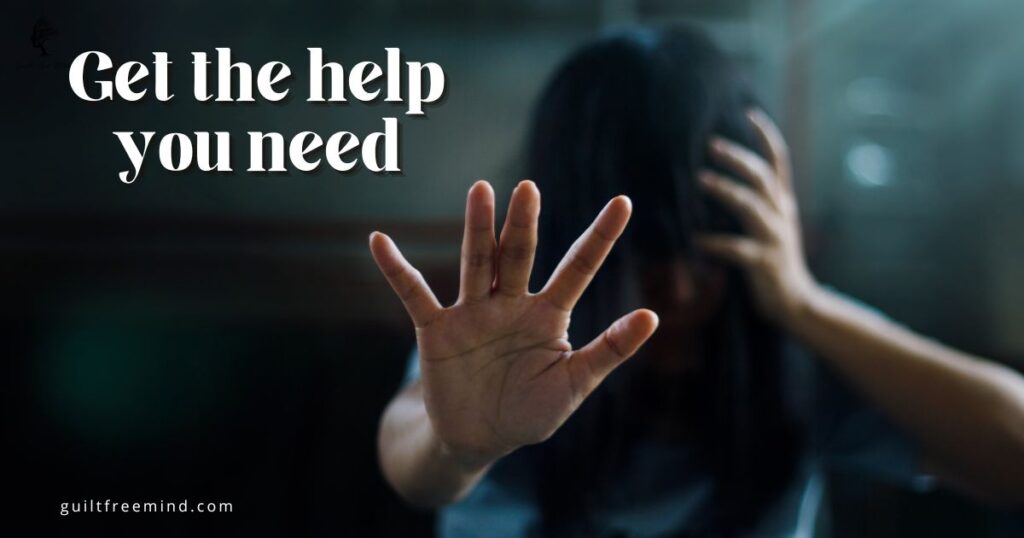
Unfortunately, this overactive stress response not only puts heavy pressure on the brain, but it also causes loss of memory, real emotions, and stress. It also takes a dangerous toll on the person’s body. Here are the physical conditions that are associated with PTSD
- Hypertension
- Obesity
- Chronic pain
- Irritable bowel syndrome urine heart disease
- High cholesterol and arteriosclerosis
- fibromyalgia
- Chronic fatigue
- We can immune system
- Irritable bowel syndrome
- Chronic pain
- Obesity
Living with trauma
Living with PTSD is hard. Sometimes, the line between reality and imagination can become very thin. It can make it hard to understand where the imagination ends and reality begins. Such people may wake up from night terrors. They may cry, thrash or scream in their sleep. Therefore, you must focus on yourself first. If you haven’t started going on walks, start now. That class you were thinking to start with, start now. If you want to pick up a hobby like painting, sculpting, dancing, etcetera. The first step in dealing with a mental health issue is identifying that you need help. Therefore, do not hesitate to reach out for help. Here are certain tips to help you get through the difficult parts
Focus on your everyday routine. It may seem mundane to you, but your PTSD can make you forget the important tasks that you have aligned for the day. Therefore, always have a to-do list at hand. This way, you won’t miss out on your work.
Ask for help
If there are people around you or if you have friends, peers, relatives, etc, willing to help you, accept their help. Ask for support from your family members and close friends. Your family members and close friends are the people who know you the best and most. Therefore, ask them for their support and help. This way, if you have a trigger coming on to you when at home, one of your family members can help you bring the trigger down so that it doesn’t affect you a lot.
You must have heard that medications and alcohol don’t mix. Similarly, if you are suffering from PTSD, you should avoid any kind of recreational drugs or alcohol. Focus on your diet, personal and work life.
Conclusion
PTSD is a severely debilitating disease. It can affect anyone of any age, ethnicity, gender or demography. Different people have different ways of expressing their trauma. Therefore, it is important to first find out if you are suffering from PTSD before starting therapy. If you are confused about the symptoms, visit a mental health practitioner. They can help you figure out if you do have PTSD. If the symptoms of PTSD pursue for more than a month, you most likely suffer from PTSD and need help.
Understanding that you need help is winning half the war. Once you realize that you have PTSD, reach out to your loved ones for support. Contact your mental health professional so that you can start therapy as soon as possible. The sooner you tackle this problem, the easier it will be to get out of it. Do not let PTSD grow and infest your life. If you decide to go for treatment later, the process of becoming better will be that much harder and take that much longer.
Subscribe
If you found this post insightful and would like to know more about PTSD and all other mental health issues, please subscribe to Guilt Free Mind. You can use the subscription option present in the sidebars for subscribing. Your subscription will allow me to notify you whenever I release a new blog post. If you like watching videos, please subscribe to the YouTube channel of Guilt Free Mind. Do not forget to hit the notification bell.
Do you think you’re suffering from PTSD? Have you experienced a traumatic event in your life? Do you face any of the symptoms mentioned above? What did you do to deal with it? Please mention your responses to these questions in the comments section. Your story can encourage someone to get the help that they desperately need. Therefore, please do not hesitate to share your own experiences in the comments. If you have any queries about this blog post or any other on Guilt Free Mind, feel free to reach out to me on any of my social media channels. You can also put your query in the comment section or send it to me via the contact form. I will be happy to help.
See you in my next blog post.
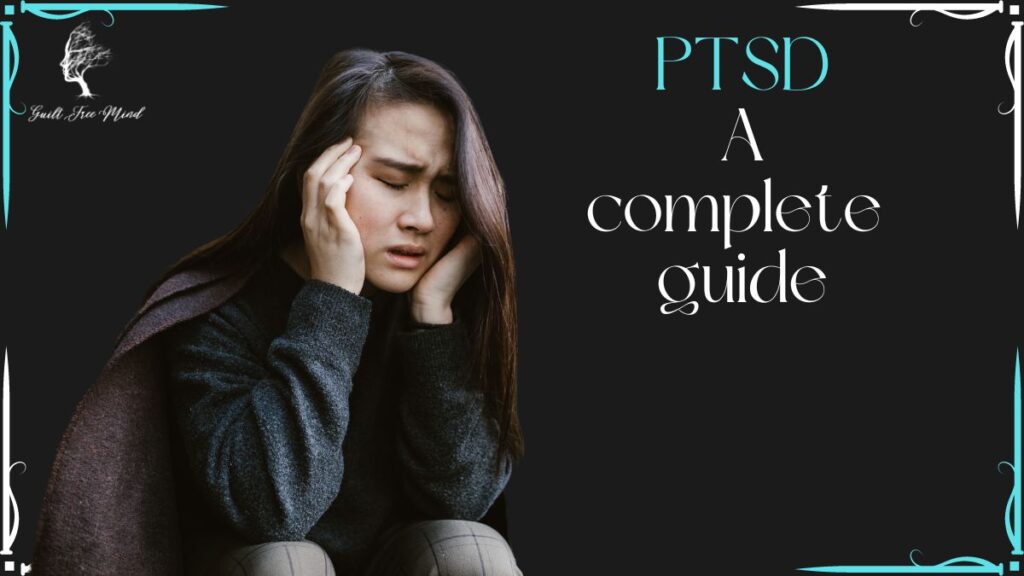
1 Comment
I have to thank you for the efforts youve put in penning this site. Im hoping to view the same high-grade blog posts by you later on as well. In fact, your creative writing abilities has encouraged me to get my very own website now 😉